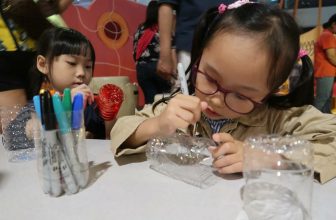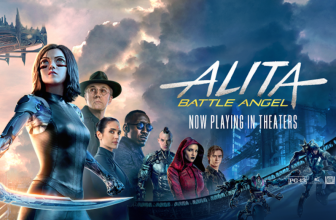
When thinking about the curriculum expansion of this kind of STEM activities, the author thinks that there are two development directions, both of which start from its “hardware attributes.” One is how to add exclusive knowledge and skills from the perspective of toys, and transform them into a tool for ability comparison and evaluation.
Recently, an organization has invited cooperation for a “drone” activity, adding educational elements and designing corresponding themed learning courses.
Market barriers for hardware vendors
This type of so-called STEM education with hardware as the main body and technological learning as the leading factor, like robots, 3D printers, remote control cars, etc., generally has narrow learning goals, small subject spans, few learning audiences, and training biased towards competition techniques. The problem is not easy to develop into a complete STEM curriculum program and school-based STEM+ education plan. Most of them appeared in the form of “enhanced learning activities”, and more of them were the themes of interest classes for off-campus training. As mentioned earlier, because it belongs to work “overlay” rather than curriculum “integration”, it cannot be accepted by general subject teachers. This may be the pain point of many hardware suppliers, it is difficult to open the school market (B to B).
Learning extension of toys, tools and teaching aids
When thinking about the curriculum expansion of this kind of STEM activities, the author thinks that there are two development directions, both of which start from its “hardware attributes.” One is how to add exclusive knowledge and skills from the perspective of toys, and transform them into a tool for ability comparison and assessment; when students and teachers master the basic operation of the tool, they can explore the space of “Skill Transfer” and then use it. Theme-based Learning, such as drones, is developed as a curriculum integration model for comprehensive learning. When there are enough interdisciplinary, cross-learning areas (KLA), cross-generic skills (Generic Skills) categories, cross-class, and even cross-hardware and other textbook designs appear, such hardware tools have the opportunity to upgrade to a kind of teaching aids commonly used in schools. , And even become the “standard configuration” of the school furniture/equipment list (F/E List), integrated into the regular classroom learning of different subjects.
Drone-based Learning Design
Second, in the course design, the exclusive knowledge and skills of hardware cannot be left behind, but as a basic part of learning and course extension. For example, the “drone education” initially conceived is prepared to construct STEM+ cross-disciplinary/learning field comprehensive learning materials based on the “D+ Curriculum Framework” model. It is very interesting that, one week after confirming this idea, I read a post on the social platform and read the “2019 Innovative Teaching Report” published by the Open University of the United Kingdom. Drone-based Learning turned out to be the fourth of the top ten innovative teachings this year. It can be seen that scholars and teachers who pay attention to innovative education can see the multiple plasticity of “drone education” in STEM+ education. Reading the analysis of the download report has increased my interest in developing such “hardware-based” STEM+ education courses. Because of the course framework and teaching design template of “Drone Education (D+)”, as well as cases of extension of learning themes, it can be applied to “Robot Education (R+)”, “3D Printing Education (3D+)”, and “Remote Control Vehicles”. Education (RC+)” and other theme designs.
The author is trying to construct the “drone education D+ course” model, and also wants to assist the academic community in the exploration of diversified and innovative comprehensive learning courses. Of course, if a school upgrades a STEM activity to a school-based curriculum design, a STEM+ education plan, and turns it into a school development project, it will provide more students with opportunities to get in touch with innovative education in different sciences. The use of drones as a learning theme can also promote the comprehensive ability construction and creative performance of students at all stages.
Hardware knowledge, skill learning + creativity, comprehensive ability construction
Previous thinking about the popularization and promotion of STEM+ education was to advocate “low-cost, low-tech configuration” on the one hand, and to promote the planning of the connection between middle, small and young (the author may be that the education community strongly recommends starting STEM+ education courses in pre-school education. Planning person), so the “Drone Education D+ Curriculum Framework” in my mind will include all learning stages of K-12. It has always been emphasized in the past that creativity is a very important core goal of STEM+ education, and ordinary teachers have a vague understanding of this learning category and ability to perform. Therefore, it is recommended that teaching design must be a “must list item” of the “learning goal”. The following are some examples of preliminary ideas for the “D+ Curriculum Planning Learning Literacy Framework” at several learning stages:
School-based collaboration involving curriculum development personnel
As mentioned in the previous column, the curriculum syllabus and subject curriculum guidelines for primary, primary and secondary schools in Hong Kong all contain a lot of STEM education elements, which have the advantage of designing integrated learning courses. However, how to integrate the curriculum from STEM to STEAM and then to STEM+ is to start with school-based STEM+ education planning, to determine the development progress of long-term and short-term courses at the educational administration level, and to determine the participating subjects and candidates at each stage of progress. Especially the coordination between the curriculum development director and the directors of various learning areas, rather than the current situation where information technology and science and engineering teachers are generally assumed and led. Each KLA must have its own boundaries, and finally become a national STEM, promote sustainable development, and enrich the curriculum themes of multiple cross-disciplinary learning extensions, in order to be considered as a successful implementation of STEM+ education.
Preparation of supporting conditions and construction of innovative and creative learning space
Of course, for the effectiveness of school-based STEM+ curriculum development, preparations for different links are indispensable. Repeat the reminder:
For example, to provide curriculum and teaching material design training for teachers in need, strengthen the guidance of subject directors in cross-disciplinary collaborative planning, establish STEM+ education learning literacy framework and evaluation mode (especially in the field of creative ability), establish school-based STEM theme teaching database, The development of diverse activities in various subjects; in addition, the academic community also needs to start to consider the construction of an “innovative and creative learning space”.
Source of citation: Insightful Masters






